Comprehensive Guide to XC7Z010-1CLG400C Specifications and Features
400 Terminations 0°C~85°C TJ 400 Pin XC7Z010 System On Chip Zynq®-7000 Series 1V









400 Terminations 0°C~85°C TJ 400 Pin XC7Z010 System On Chip Zynq®-7000 Series 1V
The XC7Z010-1CLG400C, a standout in the Zynq-7000 series by Xilinx, combines the power of a dual-core ARM Cortex-A9 processor with the flexibility of an Artix-7 FPGA.
Introduction
The XC7Z010-1CLG400C, an integration enables developers to achieve hardware acceleration and real-time processing, making it a versatile solution for industries like industrial automation, medical devices, and aerospace systems. Its high-speed I/O interfaces, including Gigabit Ethernet and USB, enhance data transfer efficiency, while on-chip memory ensures seamless task partitioning between processing and programmable logic.
Preferred for its scalability and low latency, the XC7Z010-1CLG400C supports diverse connectivity options, making it ideal for complex embedded systems. Utmel, a trusted distributor of electronic components, highlights this SoC's adaptability for tailored solutions. With AMD's robust ecosystem and the device's ability to integrate multiple interfaces, it remains a top choice for developers seeking innovation and efficiency.
Key Takeaways
The XC7Z010-1CLG400C has a dual-core ARM Cortex-A9 processor. It also includes an Artix-7 FPGA, giving it great speed and flexibility. It works well for many different uses.
This chip uses very little power, running on just 1V. This makes it perfect for devices like IoT gadgets and medical tools.
Developers can use fast I/O connections like Gigabit Ethernet and USB. These help move data quickly and allow real-time communication.
Combining processing and programmable logic makes designing systems easier. It also lowers costs and makes embedded systems more reliable.
Using the Xilinx Vivado Design Suite and other tools helps. These tools make designing faster and allow developers to create smart solutions.
Specifications
- TypeParameter
- Factory Lead Time10 Weeks
- Contact Plating
Contact plating (finish) provides corrosion protection for base metals and optimizes the mechanical and electrical properties of the contact interfaces.
Copper, Silver, Tin - Package / Case
refers to the protective housing that encases an electronic component, providing mechanical support, electrical connections, and thermal management.
400-LFBGA, CSPBGA - Surface Mount
having leads that are designed to be soldered on the side of a circuit board that the body of the component is mounted on.
YES - Number of Pins400
- Number of I/Os130
- Operating Temperature
The operating temperature is the range of ambient temperature within which a power supply, or any other electrical equipment, operate in. This ranges from a minimum operating temperature, to a peak or maximum operating temperature, outside which, the power supply may fail.
0°C~85°C TJ - Packaging
Semiconductor package is a carrier / shell used to contain and cover one or more semiconductor components or integrated circuits. The material of the shell can be metal, plastic, glass or ceramic.
Tray - Series
In electronic components, the "Series" refers to a group of products that share similar characteristics, designs, or functionalities, often produced by the same manufacturer. These components within a series typically have common specifications but may vary in terms of voltage, power, or packaging to meet different application needs. The series name helps identify and differentiate between various product lines within a manufacturer's catalog.
Zynq®-7000 - Published2010
- JESD-609 Code
The "JESD-609 Code" in electronic components refers to a standardized marking code that indicates the lead-free solder composition and finish of electronic components for compliance with environmental regulations.
e1 - Part Status
Parts can have many statuses as they progress through the configuration, analysis, review, and approval stages.
Active - Moisture Sensitivity Level (MSL)
Moisture Sensitivity Level (MSL) is a standardized rating that indicates the susceptibility of electronic components, particularly semiconductors, to moisture-induced damage during storage and the soldering process, defining the allowable exposure time to ambient conditions before they require special handling or baking to prevent failures
3 (168 Hours) - Number of Terminations400
- ECCN Code
An ECCN (Export Control Classification Number) is an alphanumeric code used by the U.S. Bureau of Industry and Security to identify and categorize electronic components and other dual-use items that may require an export license based on their technical characteristics and potential for military use.
EAR99 - Terminal Finish
Terminal Finish refers to the surface treatment applied to the terminals or leads of electronic components to enhance their performance and longevity. It can improve solderability, corrosion resistance, and overall reliability of the connection in electronic assemblies. Common finishes include nickel, gold, and tin, each possessing distinct properties suitable for various applications. The choice of terminal finish can significantly impact the durability and effectiveness of electronic devices.
Tin/Silver/Copper (Sn/Ag/Cu) - HTS Code
HTS (Harmonized Tariff Schedule) codes are product classification codes between 8-1 digits. The first six digits are an HS code, and the countries of import assign the subsequent digits to provide additional classification. U.S. HTS codes are 1 digits and are administered by the U.S. International Trade Commission.
8542.39.00.01 - Terminal Position
In electronic components, the term "Terminal Position" refers to the physical location of the connection points on the component where external electrical connections can be made. These connection points, known as terminals, are typically used to attach wires, leads, or other components to the main body of the electronic component. The terminal position is important for ensuring proper connectivity and functionality of the component within a circuit. It is often specified in technical datasheets or component specifications to help designers and engineers understand how to properly integrate the component into their circuit designs.
BOTTOM - Terminal Form
Occurring at or forming the end of a series, succession, or the like; closing; concluding.
BALL - Peak Reflow Temperature (Cel)
Peak Reflow Temperature (Cel) is a parameter that specifies the maximum temperature at which an electronic component can be exposed during the reflow soldering process. Reflow soldering is a common method used to attach electronic components to a circuit board. The Peak Reflow Temperature is crucial because it ensures that the component is not damaged or degraded during the soldering process. Exceeding the specified Peak Reflow Temperature can lead to issues such as component failure, reduced performance, or even permanent damage to the component. It is important for manufacturers and assemblers to adhere to the recommended Peak Reflow Temperature to ensure the reliability and functionality of the electronic components.
260 - Supply Voltage
Supply voltage refers to the electrical potential difference provided to an electronic component or circuit. It is crucial for the proper operation of devices, as it powers their functions and determines performance characteristics. The supply voltage must be within specified limits to ensure reliability and prevent damage to components. Different electronic devices have specific supply voltage requirements, which can vary widely depending on their design and intended application.
1V - Terminal Pitch
The center distance from one pole to the next.
0.8mm - Frequency
In electronic components, the parameter "Frequency" refers to the rate at which a signal oscillates or cycles within a given period of time. It is typically measured in Hertz (Hz) and represents how many times a signal completes a full cycle in one second. Frequency is a crucial aspect in electronic components as it determines the behavior and performance of various devices such as oscillators, filters, and communication systems. Understanding the frequency characteristics of components is essential for designing and analyzing electronic circuits to ensure proper functionality and compatibility with other components in a system.
667MHz - Base Part Number
The "Base Part Number" (BPN) in electronic components serves a similar purpose to the "Base Product Number." It refers to the primary identifier for a component that captures the essential characteristics shared by a group of similar components. The BPN provides a fundamental way to reference a family or series of components without specifying all the variations and specific details.
XC7Z010 - Operating Supply Voltage
The voltage level by which an electrical system is designated and to which certain operating characteristics of the system are related.
1V - Supply Voltage-Max (Vsup)
The parameter "Supply Voltage-Max (Vsup)" in electronic components refers to the maximum voltage that can be safely applied to the component without causing damage. It is an important specification to consider when designing or using electronic circuits to ensure the component operates within its safe operating limits. Exceeding the maximum supply voltage can lead to overheating, component failure, or even permanent damage. It is crucial to adhere to the specified maximum supply voltage to ensure the reliable and safe operation of the electronic component.
1.05V - Interface
In electronic components, the term "Interface" refers to the point at which two different systems, devices, or components connect and interact with each other. It can involve physical connections such as ports, connectors, or cables, as well as communication protocols and standards that facilitate the exchange of data or signals between the connected entities. The interface serves as a bridge that enables seamless communication and interoperability between different parts of a system or between different systems altogether. Designing a reliable and efficient interface is crucial in ensuring proper functionality and performance of electronic components and systems.
CAN, EBI/EMI, Ethernet, I2C, MMC, SD, SDIO, SPI, UART, USART, USB - RAM Size
RAM size refers to the amount of random access memory (RAM) available in an electronic component, such as a computer or smartphone. RAM is a type of volatile memory that stores data and instructions that are actively being used by the device's processor. The RAM size is typically measured in gigabytes (GB) and determines how much data the device can store and access quickly for processing. A larger RAM size allows for smoother multitasking, faster loading times, and better overall performance of the electronic component. It is an important factor to consider when choosing a device, especially for tasks that require a lot of memory, such as gaming, video editing, or running multiple applications simultaneously.
256KB - Core Processor
The term "Core Processor" typically refers to the central processing unit (CPU) of a computer or electronic device. It is the primary component responsible for executing instructions, performing calculations, and managing data within the system. The core processor is often considered the brain of the device, as it controls the overall operation and functionality. It is crucial for determining the speed and performance capabilities of the device, as well as its ability to handle various tasks and applications efficiently. In modern devices, core processors can have multiple cores, allowing for parallel processing and improved multitasking capabilities.
Dual ARM® Cortex®-A9 MPCore™ with CoreSight™ - Peripherals
In the context of electronic components, "Peripherals" refer to devices or components that are connected to a main system or device to enhance its functionality or provide additional features. These peripherals can include input devices such as keyboards, mice, and touchscreens, as well as output devices like monitors, printers, and speakers. Other examples of peripherals include external storage devices, network adapters, and cameras. Essentially, peripherals are external devices that expand the capabilities of a main electronic system or device.
DMA - Connectivity
In electronic components, "Connectivity" refers to the ability of a component to establish and maintain connections with other components or devices within a circuit. It is a crucial parameter that determines how easily signals can be transmitted between different parts of a circuit. Connectivity can be influenced by factors such as the number of input and output ports, the type of connectors used, and the overall design of the component. Components with good connectivity are essential for ensuring reliable and efficient operation of electronic systems.
CANbus, EBI/EMI, Ethernet, I2C, MMC/SD/SDIO, SPI, UART/USART, USB OTG - Architecture
In electronic components, the parameter "Architecture" refers to the overall design and structure of the component. It encompasses the arrangement of internal components, the layout of circuitry, and the physical form of the component. The architecture of an electronic component plays a crucial role in determining its functionality, performance, and compatibility with other components in a system. Different architectures can result in variations in power consumption, speed, size, and other key characteristics of the component. Designers often consider the architecture of electronic components carefully to ensure optimal performance and integration within a larger system.
MCU, FPGA - Data Bus Width
The data bus width in electronic components refers to the number of bits that can be transferred simultaneously between the processor and memory. It determines the amount of data that can be processed and transferred in a single operation. A wider data bus allows for faster data transfer speeds and improved overall performance of the electronic device. Common data bus widths include 8-bit, 16-bit, 32-bit, and 64-bit, with higher numbers indicating a larger capacity for data transfer. The data bus width is an important specification to consider when evaluating the speed and efficiency of a computer system or other electronic device.
32b - Core Architecture
In electronic components, the term "Core Architecture" refers to the fundamental design and structure of the component's internal circuitry. It encompasses the arrangement of key components, such as processors, memory units, and input/output interfaces, within the device. The core architecture plays a crucial role in determining the component's performance, power efficiency, and overall capabilities. Different core architectures are optimized for specific applications and requirements, such as high-speed processing, low power consumption, or specialized functions. Understanding the core architecture of electronic components is essential for engineers and designers to select the most suitable components for their projects.
ARM - Boundary Scan
Boundary scan is a testing technique used in electronic components to verify the interconnections between integrated circuits on a printed circuit board. It allows for the testing of digital circuits by providing a way to shift data in and out of devices through a serial interface. This method helps in identifying faults such as short circuits, open circuits, and incorrect connections without the need for physical access to the individual components. Boundary scan is commonly used during manufacturing, testing, and debugging processes to ensure the quality and reliability of electronic products.
YES - Speed Grade
Speed grade is a specification in electronic components that indicates the maximum operating speed at which the component can reliably function. It is commonly used for integrated circuits, particularly in digital logic devices and programmable logic devices. The speed grade is typically denoted by a number or letter code that correlates to the maximum frequency or propagation delay of the device, influencing its performance in high-speed applications. Components with higher speed grades are capable of faster processing and lower signal delay compared to those with lower grades.
-1 - RAM (words)
RAM (words) is a parameter used to describe the memory capacity of a random access memory (RAM) module in terms of the number of words it can store. In the context of electronic components, a word typically refers to the amount of data that can be processed or stored by the RAM module in a single operation. The RAM (words) specification indicates the total number of words that can be stored in the RAM module, with each word typically consisting of a fixed number of bits. This parameter is important for determining the overall memory capacity and performance of the RAM module in electronic devices.
256000 - Primary Attributes
Primary attributes in electronic components refer to the essential characteristics that define the performance and functionality of the component. These attributes typically include parameters such as voltage rating, current rating, resistance, capacitance, and power dissipation. Understanding these primary attributes is crucial for selecting the appropriate component for specific applications and ensuring reliable operation within the desired electrical specifications.
Artix™-7 FPGA, 28K Logic Cells - Bus Compatibility
Bus compatibility in electronic components refers to the ability of a device to communicate effectively with other devices on a shared data bus. This parameter is crucial in ensuring that different components can exchange information seamlessly and operate together without compatibility issues. It involves factors such as voltage levels, signal timing, and data protocols that need to be standardized for proper communication. Components with good bus compatibility can work together efficiently in a system, while those with poor compatibility may lead to communication errors or system malfunctions. Manufacturers often specify the bus compatibility of their components to help users ensure proper integration and functionality within their electronic systems.
CAN; ETHERNET; I2C; SPI; UART; USB - Length17mm
- Height Seated (Max)
Height Seated (Max) is a parameter in electronic components that refers to the maximum allowable height of the component when it is properly seated or installed on a circuit board or within an enclosure. This specification is crucial for ensuring proper fit and alignment within the overall system design. Exceeding the maximum seated height can lead to mechanical interference, electrical shorts, or other issues that may impact the performance and reliability of the electronic device. Manufacturers provide this information to help designers and engineers select components that will fit within the designated space and function correctly in the intended application.
1.6mm - Radiation Hardening
Radiation hardening is the process of making electronic components and circuits resistant to damage or malfunction caused by high levels of ionizing radiation, especially for environments in outer space (especially beyond the low Earth orbit), around nuclear reactors and particle accelerators, or during nuclear accidents or nuclear warfare.
No - RoHS Status
RoHS means “Restriction of Certain Hazardous Substances” in the “Hazardous Substances Directive” in electrical and electronic equipment.
ROHS3 Compliant
Technical Specifications Analysis
Processing Capabilities
Dual-core ARM Cortex-A9 processor
The XC7Z010-1CLG400C features a dual-core ARM Cortex-A9 processor, delivering high processing power while maintaining low energy consumption. Built on 28nm process technology, it ensures efficient operation and thermal management, enabling the device to handle demanding workloads without overheating. This processor excels in multitasking and real-time data processing, making it ideal for embedded systems and industrial automation.
Key highlights of the processor include:
Combines microcontroller and FPGA capabilities in one device.
Optimized for applications in industrial automation, IoT, and consumer electronics.
Operates at a peak frequency of 667MHz, ensuring fast and reliable performance.
Artix-7 FPA with 28K logic cells
The Artix-7 FPGA integrated into the XC7Z010-1CLG400C provides 28,000 logic cells, 17,600 LUTs, and 80 DSP slices. This configuration allows developers to implement complex digital circuits with ease. The FPGA's flexibility supports hardware acceleration, enabling faster execution of computationally intensive tasks.
Memory and Storage
On-chip memory (256KB RAM)
The XC7Z010-1CLG400C includes 256KB of on-chip memory, ensuring sufficient storage for real-time processing and task partitioning. This memory supports seamless communication between the processor and FPGA, enhancing overall system efficiency.
External memory interfaces
The device supports a variety of external memory types, including DDR3, DDR3L, DDR2, and LPDDR2. Additional compatibility with quad-SPI, NAND, and NOR static memory ensures adaptability for diverse applications.
Memory Type | Specification |
On-chip Memory | 256KB |
External Memory | DDR3, DDR3L, DDR2, LPDDR2 |
Additional Support | 2 x quad-SPI, NAND, NOR static memory |
Connectivity Options
High-speed I/O interfaces (CAN, Ethernet, USB, etc.)
The XC7Z010-1CLG400C offers high-speed interfaces such as Gigabit Ethernet, USB, and SATA, ensuring rapid data transfer rates. These interfaces are essential for applications requiring real-time communication and high data throughput.
Key connectivity features include:
Gigabit Ethernet for fast network communication.
USB for versatile peripheral integration.
Comprehensive support for CAN, SPI, UART, and I2C protocols.
Peripheral support
The SoC provides extensive peripheral support, enabling developers to integrate multiple devices seamlessly. This flexibility makes it a preferred choice for complex embedded systems. Utmel, a trusted distributor of electronic components, highlights the XC7Z010-1CLG400C's adaptability for tailored solutions, ensuring developers can meet specific design requirements efficiently.
Power and Performance Metrics
Low power consumption (1V supply voltage)
The XC7Z010-1CLG400C stands out for its energy-efficient design, making it an excellent choice for applications requiring low power consumption. Operating at a supply voltage of just 1V, this SoC minimizes energy usage without compromising performance. Its heterogeneous architecture, a hallmark of the Zynq-7000 series, optimizes power efficiency by delegating compute-intensive tasks to the most suitable processing unit.
The dual-core ARM Cortex-A9 processor enhances power efficiency while delivering robust processing capabilities.
The device's low power consumption makes it ideal for battery-powered systems and energy-sensitive applications.
Developers can rely on this feature to design systems that meet stringent energy-saving requirements.
Utmel, a trusted distributor of electronic components, highlights the XC7Z010-1CLG400C's ability to balance performance and power efficiency. This capability ensures its suitability for embedded systems, IoT devices, and industrial automation.
Peak frequency of 667MHz
The XC7Z010-1CLG400C achieves a peak operating frequency of 667MHz, enabling it to handle demanding workloads with ease. This high clock speed ensures rapid data processing and seamless multitasking, which are essential for real-time applications. The dual-core ARM Cortex-A9 processor, combined with the Artix-7 FPGA, allows developers to execute complex algorithms and computational tasks efficiently.
Tip: The 667MHz peak frequency ensures that the XC7Z010-1CLG400C can support high-performance applications without sacrificing energy efficiency.
This impressive frequency, coupled with the device's low power consumption, makes it a preferred choice for developers seeking to optimize both speed and energy usage. Utmel emphasizes the importance of this balance, particularly for industries like aerospace, medical devices, and IoT, where performance and efficiency are critical.
By integrating these features, the XC7Z010-1CLG400C delivers a powerful yet energy-conscious solution for modern embedded systems.
Key Features
Integration of ARM and FPGA
Benefits of combining processing and programmable logic
The XC7Z010-1CLG400C excels by integrating ARM processing capabilities with FPGA logic within a single chip. This combination offers several advantages:
Reduces the need for multiple components, simplifying system design and enhancing reliability.
Minimizes potential points of failure, making it ideal for industries like healthcare and manufacturing where dependability is critical.
Provides a robust platform for tailored solutions, enabling developers to address specific application requirements.
This integration allows the ARM core to manage high-level functions and complex algorithms, while the FPGA handles time-critical tasks such as signal filtering and real-time control. By reducing overall system complexity and size, the XC7Z010-1CLG400C lowers costs and supports compact embedded designs. Utmel, a trusted distributor of electronic components, highlights this feature as a key reason for the device's popularity in embedded systems and industrial automation.
Scalability and Flexibility
Customization options for diverse applications
The architecture of the XC7Z010-1CLG400C offers significant customization opportunities. Developers can efficiently partition tasks, with the ARM processor managing high-level system functions and the FPGA handling real-time processing. This flexibility makes the device suitable for a wide range of applications, from IoT devices to aerospace systems.
Customization Feature | Application Use Case |
ARM Processor Integration | High-level system functions |
FPGA Logic Partitioning | Real-time processing tasks |
The XC7Z010-1CLG400C also provides scalability to meet specific requirements. Its ability to perform time-critical tasks, such as signal filtering and encryption, ensures adaptability for diverse applications. Utmel emphasizes the device's flexibility, which allows developers to create innovative solutions tailored to their needs.
Advanced Security Features
Encryption and secure boot capabilities
Security remains a top priority for the XC7Z010-1CLG400C. The device includes RSA authentication for secure boot, ensuring that only authorized firmware can execute. It also supports AES and SHA 256-bit decryption and authentication, providing robust protection against unauthorized access. These features make the XC7Z010-1CLG400C a reliable choice for applications requiring high levels of data security, such as medical devices and defense systems.
Note: Utmel highlights the advanced security features of the XC7Z010-1CLG400C as a critical factor for developers working in sensitive industries.
By integrating these capabilities, the XC7Z010-1CLG400C ensures that developers can build secure and dependable systems for modern applications.
Development Tools and Ecosystem
Xilinx Vivado Design Suite
The Xilinx Vivado Design Suite offers a robust platform for developing with the XC7Z010-1CLG400C. This suite provides a comprehensive environment for synthesizing and optimizing custom logic, which is essential for leveraging the device's dual-core ARM Cortex-A9 processor and Artix-7 FPGA. Its high-level synthesis tools simplify the creation of complex designs, enabling developers to focus on innovation rather than manual coding.
Integration with the Xilinx Software Development Kit (SDK) and PetaLinux further enhances the development process. These tools streamline software development, allowing engineers to create, debug, and deploy applications efficiently. The Vivado Design Suite also supports hardware/software co-design, ensuring seamless communication between the ARM processor and FPGA logic. This capability makes it an indispensable tool for developers working on embedded systems, industrial automation, and IoT applications.
Support for AMD and Third-party Tools
The XC7Z010-1CLG400C benefits from extensive support for AMD tools, which complement the Xilinx ecosystem. AMD's advanced development resources, such as the AMD Vitis Unified Software Platform, enable developers to optimize performance and reduce time-to-market. These tools provide a unified environment for hardware acceleration, making them ideal for applications requiring high computational efficiency.
Third-party tools also play a crucial role in enhancing the development experience. Compatibility with industry-standard software, such as MATLAB and Simulink, allows engineers to simulate and validate designs before implementation. This flexibility ensures that developers can choose the best tools for their specific needs, whether they are working on medical devices, aerospace systems, or consumer electronics.
Utmel, a trusted distributor of electronic components, emphasizes the importance of these tools in maximizing the potential of the XC7Z010-1CLG400C. By leveraging the Xilinx Vivado Design Suite, AMD resources, and third-party software, developers can create innovative solutions tailored to their applications.
Applications and Benefits
Common Use Cases
Industrial automation
The XC7Z010-1CLG400C plays a pivotal role in industrial automation by integrating processing and FPGA capabilities into a single chip. This reduces the need for multiple components, enhancing system reliability. Its rich peripheral support enables seamless connectivity with sensors and actuators, making it ideal for real-time control systems. Industries like manufacturing and healthcare benefit from its ability to handle complex processing tasks efficiently.
Simplifies system design by combining processing and programmable logic.
Enhances reliability, crucial for critical applications.
Supports seamless connectivity for diverse industrial devices.
IoT and edge computing
The XC7Z010-1CLG400C excels in IoT and edge computing applications due to its scalability and low power consumption. It supports local data processing, reducing reliance on cloud communication and improving efficiency. Developers can use it for IoT gateways, sensor hubs, and edge devices, where its rich connectivity options facilitate expansive IoT ecosystems.
Ideal for IoT gateways and edge devices.
Reduces energy usage with efficient local data processing.
Improves security and performance in IoT applications.
Medical devices
Medical devices require high-performance processing and reliability, both of which the XC7Z010-1CLG400C delivers. Its programmable logic resources and advanced features make it suitable for applications like medical imaging, diagnostic tools, and wearable health monitoring devices. The device's ability to handle complex algorithms and high-throughput sensor data ensures compact and efficient designs.
Aerospace and defense
The XC7Z010-1CLG400C supports aerospace and defense systems with its robust processing capabilities and programmable logic. It enables the development of efficient solutions for applications requiring high reliability, such as avionics systems and secure communication devices.
Advantages of Using the XC7Z010-1CLG400C
High performance with low power consumption
The XC7Z010-1CLG400C combines a dual-core ARM processor and Artix-7 FPGA to deliver high performance while maintaining low energy usage. Its 1V supply voltage and efficient architecture make it suitable for energy-sensitive applications like IoT and portable devices.
Versatility in design and deployment
The device's integration of processing and programmable logic offers unmatched flexibility. Developers can customize it for diverse applications, from industrial automation to medical devices. Its scalability ensures adaptability to specific project requirements.
Cost-effectiveness for embedded systems
The XC7Z010-1CLG400C integrates processing and FPGA capabilities within a single chip, reducing the need for multiple components. This simplifies system design, lowers costs, and enhances reliability. Its compact design makes it a cost-effective choice for industries like healthcare and manufacturing, where dependability is critical.
Utmel, a trusted distributor of electronic components, highlights the XC7Z010-1CLG400C as a reliable and efficient solution for embedded systems. Its combination of performance, flexibility, and cost-effectiveness makes it a preferred choice for developers across various industries.
Parts with Similar Specs
- ImagePart NumberManufacturerPackage / CaseNumber of PinsNumber of I/ORAM SizeSupply VoltageTerminal PositionPackagingTerminal PitchView Compare
XC7Z010-1CLG400C
400-LFBGA, CSPBGA
400
130
256KB
1 V
BOTTOM
Tray
0.8 mm
400-LFBGA
400
169
87.9 kB
1.2 V
BOTTOM
Tray
0.8 mm
400-LFBGA
400
169
87.9 kB
1.2 V
BOTTOM
Tray
0.8 mm
324-LFBGA, CSPBGA
325
150
112.5 kB
1 V
BOTTOM
Tray
0.8 mm
324-LFBGA, CSPBGA
325
150
112.5 kB
1 V
BOTTOM
Tray
0.8 mm
Comparison with Similar Products
Comparison with Other Zynq-7000 Models
Differences in processing power and FPGA resources
The XC7Z010-1CLG400C stands out within the Zynq-7000 series due to its balanced combination of processing power and FPGA resources. Key differences include:
Dual-core ARM Cortex-A9 processor: Provides robust computing capabilities for multitasking and real-time applications.
28,000 logic cells: Supports significant customization in hardware design.
240 KB of Block RAM and 80 DSP slices: Enhances processing power for computationally intensive tasks.
Compared to higher-end models like the XC7Z020, which offers more logic cells and DSP slices, the XC7Z010-1CLG400C provides a cost-effective solution for applications that do not require extensive FPGA resources. Its efficient design makes it ideal for developers seeking a balance between performance and affordability.
Use case suitability
The XC7Z010-1CLG400C excels in specific applications where its features align with performance requirements:
Industrial Control Systems: Handles real-time processing for machinery monitoring and control.
Automotive Applications: Delivers low latency for advanced driver-assistance systems (ADAS).
Medical Devices: Processes complex algorithms for imaging and health monitoring.
IoT Solutions: Offers scalability and energy efficiency for edge computing devices.
Utmel, a trusted distributor of electronic components, highlights the XC7Z010-1CLG400C as a versatile choice for these industries.
Comparison with Competing SoCs
Key differentiators in performance and features
The XC7Z010-1CLG400C differentiates itself from competing SoCs through its unique integration of ARM processing and FPGA logic. This combination enables task partitioning, improving performance for applications like industrial control and video processing.
Feature | XC7Z010-1CLG400C | Competing SoCs |
Processor | Dual-core ARM Cortex-A9 | Varies (single or multi-core) |
FPGA Fabric | High-performance Artix-7 | Limited or no FPGA capabilities |
Logic Cells | 28,000 | Varies |
Block RAM | 240 KB | Varies |
DSP Slices | 80 | Varies |
High-speed Interfaces | Yes (Gigabit Ethernet, USB, SATA) | Varies |
Power Consumption | Low | Varies |
This table demonstrates the XC7Z010-1CLG400C's superiority in combining processing power, FPGA resources, and energy efficiency.
Market positioning and pricing
The XC7Z010-1CLG400C is marketed as a high-performance, low-power SoC, suitable for applications like industrial automation and automotive electronics. Its price, ranging from $28.624 to $64.338, reflects its advanced features, including a dual-core ARM Cortex-A9 processor and Artix-7 FPGA. While its cost may be higher than some competitors, its capabilities justify the investment for developers prioritizing performance and flexibility.
Utmel emphasizes the XC7Z010-1CLG400C's value in delivering cutting-edge solutions for embedded systems and industrial applications. Its unique combination of features positions it as a preferred choice for engineers seeking innovation and efficiency.
Datasheet PDF
- Datasheets :
- PCN Assembly/Origin :
- Environmental Information :
- PCN Design/Specification :
Practical Considerations for Use
Design and Development Tips
Choosing the right development tools
Selecting the appropriate tools is essential for maximizing the potential of the XC7Z010-1CLG400C. Developers should prioritize tools that streamline the design process and enhance productivity. The following table outlines some of the most effective tools for working with this SoC:
Tool | Purpose |
Vivado Design Suite | Comprehensive environment for FPGA design and custom logic optimization. |
Xilinx SDK | Development of software applications for ARM Cortex-A9 cores. |
PetaLinux | Simplifies building custom Linux distributions for Zynq-7000. |
Model-Based Design | Supports MATLAB/Simulink integration for system design and verification. |
Utmel, a trusted distributor of electronic components, emphasizes the importance of these tools in ensuring efficient development workflows. By leveraging these resources, developers can create innovative and reliable solutions tailored to their specific applications.
Optimizing power and performance
To achieve optimal power efficiency and performance, developers should implement several strategies when designing with the XC7Z010-1CLG400C:
Offload compute-intensive tasks to the FPGA to reduce latency and improve throughput.
Use the ARM processor for control and communication tasks.
Implement dynamic voltage and frequency scaling (DVFS) to balance power consumption with processing needs.
Utilize clock gating techniques to minimize power usage by turning off unused logic blocks in the FPGA.
These techniques enable developers to design systems that meet stringent energy-saving requirements without compromising performance. Utmel highlights the XC7Z010-1CLG400C's ability to support such optimizations, making it a preferred choice for energy-sensitive applications.
Challenges and Limitations
Potential design complexities
The XC7Z010-1CLG400C's architecture requires careful task partitioning between the ARM processor and FPGA logic. The ARM processor excels at handling general-purpose tasks, while the FPGA is better suited for real-time processing and hardware acceleration. Efficient communication between these components is critical for achieving optimal performance. Developers must also consider the complexity of integrating multiple interfaces and peripherals, which can increase design time. Utmel recommends leveraging the Vivado Design Suite and Xilinx SDK to simplify these challenges and ensure seamless system integration.
Mitigating thermal and power issues
Thermal management and power efficiency are crucial considerations when working with the XC7Z010-1CLG400C. Developers should adopt strategies such as using heat sinks or thermal pads to dissipate heat effectively. Additionally, implementing power-saving techniques like clock gating and DVFS can help maintain low power consumption. These measures ensure that the device operates reliably under demanding conditions, making it suitable for applications in industrial automation, IoT, and aerospace systems.
By addressing these considerations, developers can fully harness the capabilities of the XC7Z010-1CLG400C while ensuring robust and efficient designs.
The XC7Z010-1CLG400C stands out as a versatile and efficient SoC, offering a unique combination of processing and FPGA capabilities. Key highlights include:
High-speed I/O interfaces like Gigabit Ethernet and USB for fast data transfer.
On-chip memory and block RAM for seamless task execution.
Scalability and flexibility, enabling tailored solutions for diverse applications.
Low latency and real-time processing for critical tasks.
Power efficiency, ideal for energy-sensitive designs.
This integration simplifies system design, enhances reliability, and supports energy-efficient applications like industrial control and IoT. Utmel, a trusted distributor of electronic components, emphasizes its suitability for developers seeking innovative and compact solutions.
What makes the XC7Z010-1CLG400C unique compared to other SoCs?
The XC7Z010-1CLG400C integrates a dual-core ARM Cortex-A9 processor with an Artix-7 FPGA, offering unmatched flexibility. This combination allows developers to handle both general-purpose processing and real-time tasks efficiently. Utmel highlights its adaptability for applications requiring high performance and low power consumption.
Can the XC7Z010-1CLG400C support IoT applications?
Yes, the XC7Z010-1CLG400C is ideal for IoT applications. Its low power consumption, scalability, and rich connectivity options, including Ethernet and USB, make it suitable for IoT gateways and edge devices. Utmel emphasizes its role in enabling efficient and secure IoT ecosystems.
What development tools are compatible with the XC7Z010-1CLG400C?
The XC7Z010-1CLG400C supports the Xilinx Vivado Design Suite, Xilinx SDK, and PetaLinux. These tools streamline hardware/software co-design and simplify development workflows. Utmel recommends these tools for maximizing the device's potential in embedded systems and industrial automation.
How does the XC7Z010-1CLG400C ensure data security?
The XC7Z010-1CLG400C includes advanced security features like RSA authentication for secure boot and AES encryption. These capabilities protect against unauthorized access. Utmel highlights its reliability for applications in sensitive industries like healthcare and aerospace.
Where can developers purchase the XC7Z010-1CLG400C?
Developers can purchase the XC7Z010-1CLG400C from trusted distributors like Utmel. Utmel provides high-quality electronic components and ensures reliable delivery, making it a preferred choice for engineers and developers worldwide.
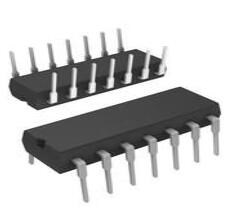 IR2113 High And Low Side Driver: 1.2V, 500V IGBT Driver IC, 14 PDIP and Schematic
IR2113 High And Low Side Driver: 1.2V, 500V IGBT Driver IC, 14 PDIP and Schematic05 January 20226854
 TPS61022RWUR Boost Converter, 0.5-V 7-VQFN and Switching Voltage Regulators
TPS61022RWUR Boost Converter, 0.5-V 7-VQFN and Switching Voltage Regulators17 March 20222021
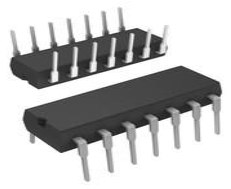 CD4011 Nand Gate IC: Alternative, Pinout and Datasheet
CD4011 Nand Gate IC: Alternative, Pinout and Datasheet05 August 20217550
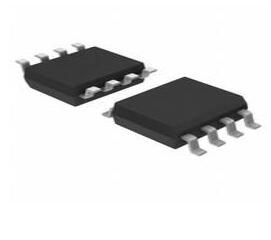 TL062CD OP-AMP: Datasheet, Schematic, Typical Application
TL062CD OP-AMP: Datasheet, Schematic, Typical Application13 September 20211737
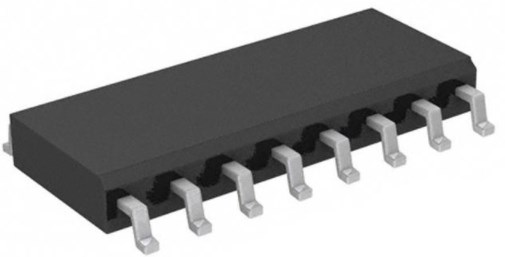 ULN2003AD: NPN Transistor, Pinout, Datasheet
ULN2003AD: NPN Transistor, Pinout, Datasheet23 March 20222694
 How to use BME280 with Arduino?
How to use BME280 with Arduino?07 June 20222782
 Exploring the Microchip PIC24F08KL301ESO Microcontroller: A Holistic Analysis
Exploring the Microchip PIC24F08KL301ESO Microcontroller: A Holistic Analysis29 February 2024105
 2N1711 NPN Power Transistor: 2N1711 Transistor Datasheet, Pinout and Equivalents
2N1711 NPN Power Transistor: 2N1711 Transistor Datasheet, Pinout and Equivalents14 December 20214763
 What is the DC Bias Characteristic of a Capacitor?
What is the DC Bias Characteristic of a Capacitor?25 July 202210661
 Unveiling the Potential of GaN Semiconductor-Enabled Three-Phase Propulsion Inverters for Enhanced EV Performance
Unveiling the Potential of GaN Semiconductor-Enabled Three-Phase Propulsion Inverters for Enhanced EV Performance09 August 20231429
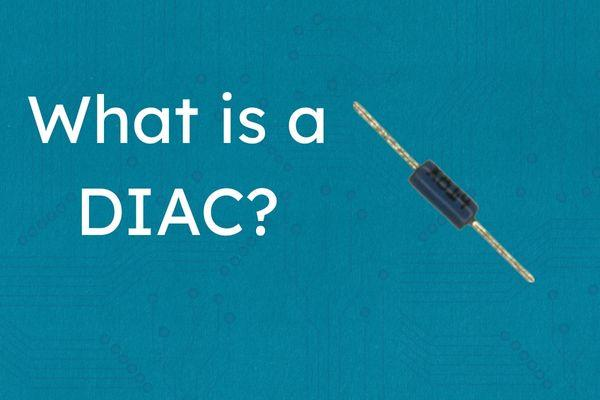 An Introduction to DIACs
An Introduction to DIACs21 May 20251703
 50 World Famous Sensor Manufacturing Companies
50 World Famous Sensor Manufacturing Companies31 October 2025889020
 Understanding RFID Antennas and Their Role in Modern Technology
Understanding RFID Antennas and Their Role in Modern Technology30 June 2025623
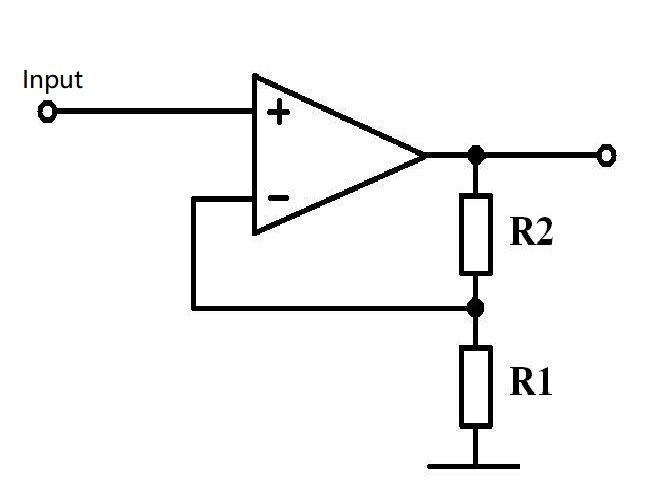 Introduction to DC Amplifier
Introduction to DC Amplifier07 November 202514603
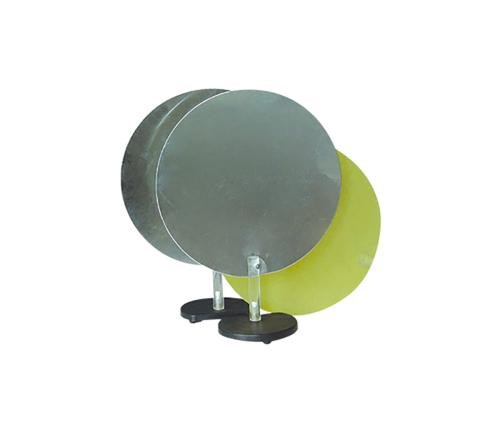 Parallel Plate Capacitor: Features, Working Principle and Applications
Parallel Plate Capacitor: Features, Working Principle and Applications30 January 20217234
 The Energy Internet - A New Era of Energy Management and Distribution
The Energy Internet - A New Era of Energy Management and Distribution11 July 20233319
Xilinx Inc.
In Stock: 980
United States
China
Canada
Japan
Russia
Germany
United Kingdom
Singapore
Italy
Hong Kong(China)
Taiwan(China)
France
Korea
Mexico
Netherlands
Malaysia
Austria
Spain
Switzerland
Poland
Thailand
Vietnam
India
United Arab Emirates
Afghanistan
Åland Islands
Albania
Algeria
American Samoa
Andorra
Angola
Anguilla
Antigua & Barbuda
Argentina
Armenia
Aruba
Australia
Azerbaijan
Bahamas
Bahrain
Bangladesh
Barbados
Belarus
Belgium
Belize
Benin
Bermuda
Bhutan
Bolivia
Bonaire, Sint Eustatius and Saba
Bosnia & Herzegovina
Botswana
Brazil
British Indian Ocean Territory
British Virgin Islands
Brunei
Bulgaria
Burkina Faso
Burundi
Cabo Verde
Cambodia
Cameroon
Cayman Islands
Central African Republic
Chad
Chile
Christmas Island
Cocos (Keeling) Islands
Colombia
Comoros
Congo
Congo (DRC)
Cook Islands
Costa Rica
Côte d’Ivoire
Croatia
Cuba
Curaçao
Cyprus
Czechia
Denmark
Djibouti
Dominica
Dominican Republic
Ecuador
Egypt
El Salvador
Equatorial Guinea
Eritrea
Estonia
Eswatini
Ethiopia
Falkland Islands
Faroe Islands
Fiji
Finland
French Guiana
French Polynesia
Gabon
Gambia
Georgia
Ghana
Gibraltar
Greece
Greenland
Grenada
Guadeloupe
Guam
Guatemala
Guernsey
Guinea
Guinea-Bissau
Guyana
Haiti
Honduras
Hungary
Iceland
Indonesia
Iran
Iraq
Ireland
Isle of Man
Israel
Jamaica
Jersey
Jordan
Kazakhstan
Kenya
Kiribati
Kosovo
Kuwait
Kyrgyzstan
Laos
Latvia
Lebanon
Lesotho
Liberia
Libya
Liechtenstein
Lithuania
Luxembourg
Macao(China)
Madagascar
Malawi
Maldives
Mali
Malta
Marshall Islands
Martinique
Mauritania
Mauritius
Mayotte
Micronesia
Moldova
Monaco
Mongolia
Montenegro
Montserrat
Morocco
Mozambique
Myanmar
Namibia
Nauru
Nepal
New Caledonia
New Zealand
Nicaragua
Niger
Nigeria
Niue
Norfolk Island
North Korea
North Macedonia
Northern Mariana Islands
Norway
Oman
Pakistan
Palau
Palestinian Authority
Panama
Papua New Guinea
Paraguay
Peru
Philippines
Pitcairn Islands
Portugal
Puerto Rico
Qatar
Réunion
Romania
Rwanda
Samoa
San Marino
São Tomé & Príncipe
Saudi Arabia
Senegal
Serbia
Seychelles
Sierra Leone
Sint Maarten
Slovakia
Slovenia
Solomon Islands
Somalia
South Africa
South Sudan
Sri Lanka
St Helena, Ascension, Tristan da Cunha
St. Barthélemy
St. Kitts & Nevis
St. Lucia
St. Martin
St. Pierre & Miquelon
St. Vincent & Grenadines
Sudan
Suriname
Svalbard & Jan Mayen
Sweden
Syria
Tajikistan
Tanzania
Timor-Leste
Togo
Tokelau
Tonga
Trinidad & Tobago
Tunisia
Turkey
Turkmenistan
Turks & Caicos Islands
Tuvalu
U.S. Outlying Islands
U.S. Virgin Islands
Uganda
Ukraine
Uruguay
Uzbekistan
Vanuatu
Vatican City
Venezuela
Wallis & Futuna
Yemen
Zambia
Zimbabwe










